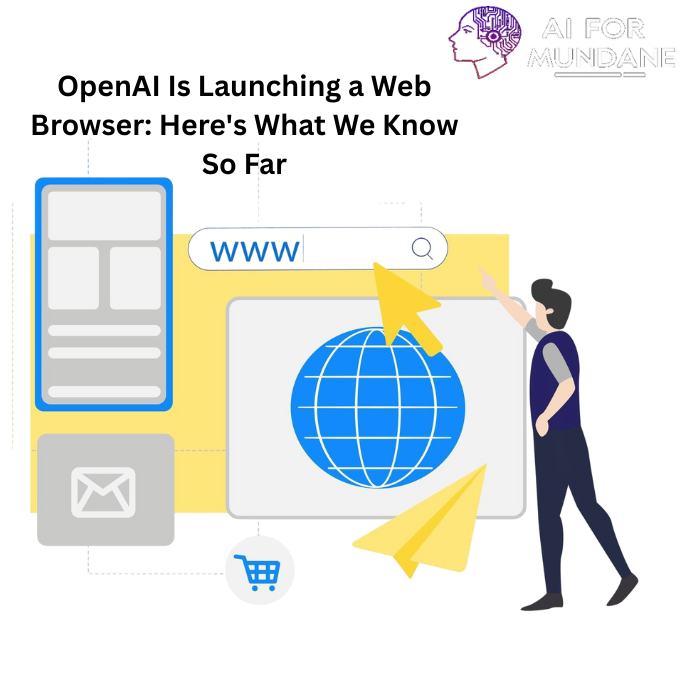OpenAI Is Launching a Web Browser: Here’s What We Know So Far
In a move that could reshape how we experience the web, OpenAI — the company behind ChatGPT — is reportedly building its own AI-powered browser. While details are still emerging, this development signals a bold leap from backend AI models to front-end digital experiences.
As AI tools become more integrated into daily tasks, OpenAI launching a browser seems like the next logical step. But what makes this browser different from the rest?
Why Is OpenAI Building a Browser?
The internet browser has evolved into more than a simple gateway. It’s now the core of how we work, learn, shop, and communicate. With the rise of AI tools like ChatGPT, OpenAI likely sees an opportunity to build a browser designed for the AI-first world.
Here’s what sets the concept apart:
AI-Native Browsing: Instead of relying on browser extensions or add-ons, OpenAI’s browser could have AI built directly into its core — giving users instant access to summaries, explanations, and task support.
Smarter Search Experience: Rather than traditional keyword searches, users might simply ask their browser questions and get precise, context-aware answers.
Privacy and Personalization: With growing concerns over data tracking and targeted advertising, OpenAI might offer a privacy-first experience without relying on ad-based business models.
Can It Compete with Google Chrome?
Google Chrome dominates the global browser market, but user dissatisfaction is growing. Issues like privacy concerns, cluttered interfaces, and overwhelming tab management have led some users to seek alternatives.
If OpenAI’s browser can:
Help users complete tasks using natural language
Reduce information overload and tab-switching
Replace static bookmarks with dynamic AI memory
Then it may have a real shot at disrupting the market — just as Chrome did to Internet Explorer more than a decade ago.
Potential Features in OpenAI’s Browser
Although OpenAI hasn’t released official specifications, reports and early speculation suggest it could include:
Built-in ChatGPT Assistant to help users understand and interact with webpages
Voice Navigation for hands-free browsing and commands
Automatic Summarization of lengthy articles and documents
AI-Powered Shopping Assistance to find better deals and autofill purchase info
Privacy-First Architecture with no ads or tracking
Why This Is a Big Deal
A browser with AI embedded at its foundation could redefine the role of the browser itself. Instead of being just a place to visit websites, it becomes an intelligent workspace — helping users consume content, complete tasks, and make decisions more efficiently.
It also reflects a bigger shift in tech:
AI is no longer an external add-on — it’s becoming the interface itself.
What Comes Next
If OpenAI launches the browser in 2025 or earlier, it could be a pivotal moment in consumer tech. More importantly, it will likely spark a wave of AI-native applications — including smarter search, conversational interfaces, and deeper personalization across tools.
Conclusion
The browser hasn’t seen true disruption since the rise of Chrome. OpenAI’s entrance could change that. Whether or not it becomes the next dominant platform, one thing is certain: the future of browsing is moving beyond search engines and toward AI-powered experiences.
For more updates on AI tools, trends, and tech shifts, follow AI for Mundane — your go-to source for everyday AI insights.






